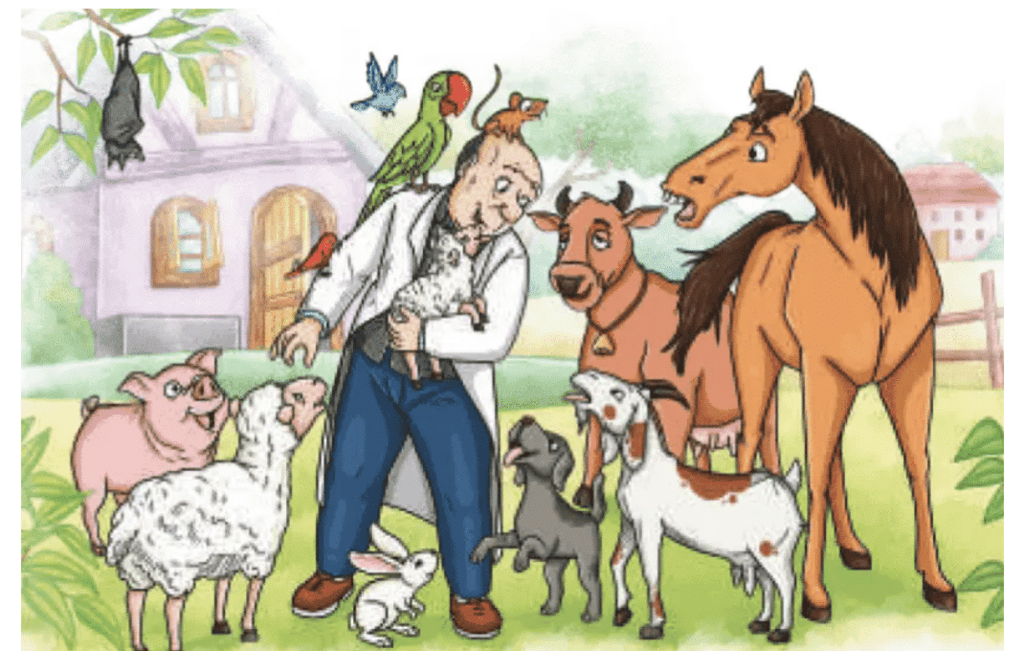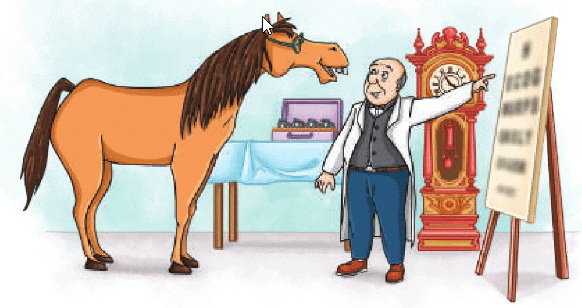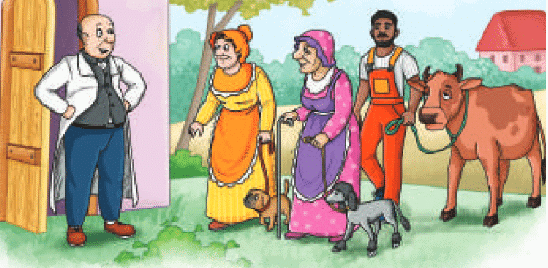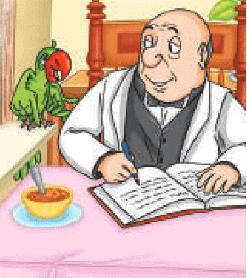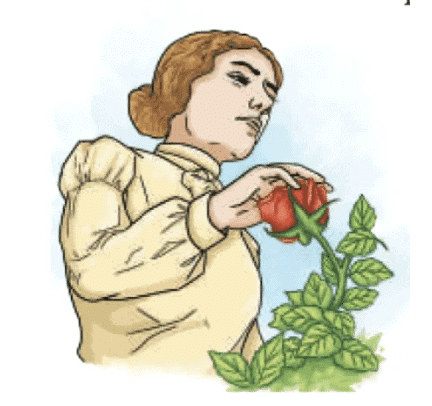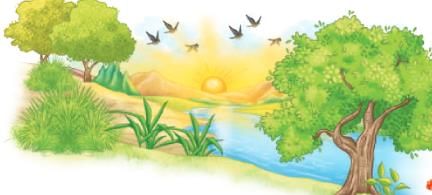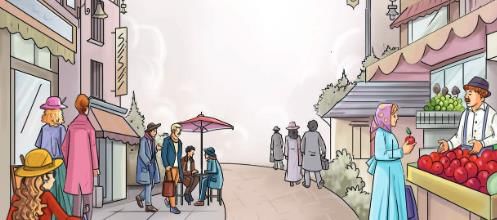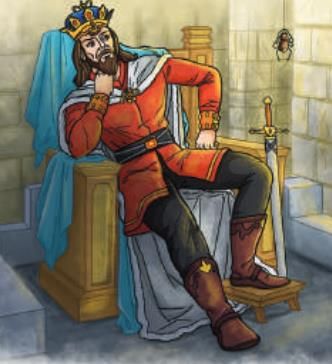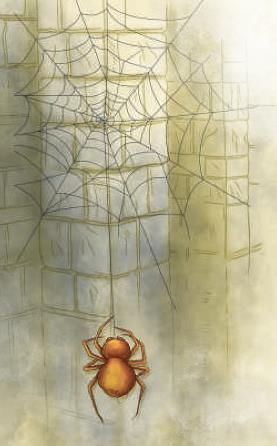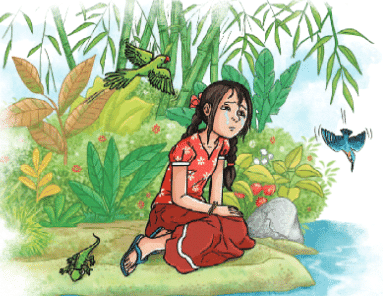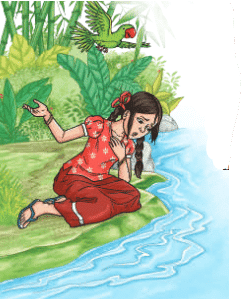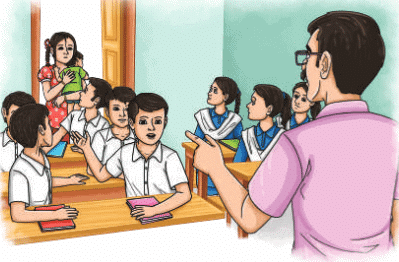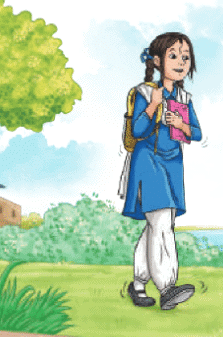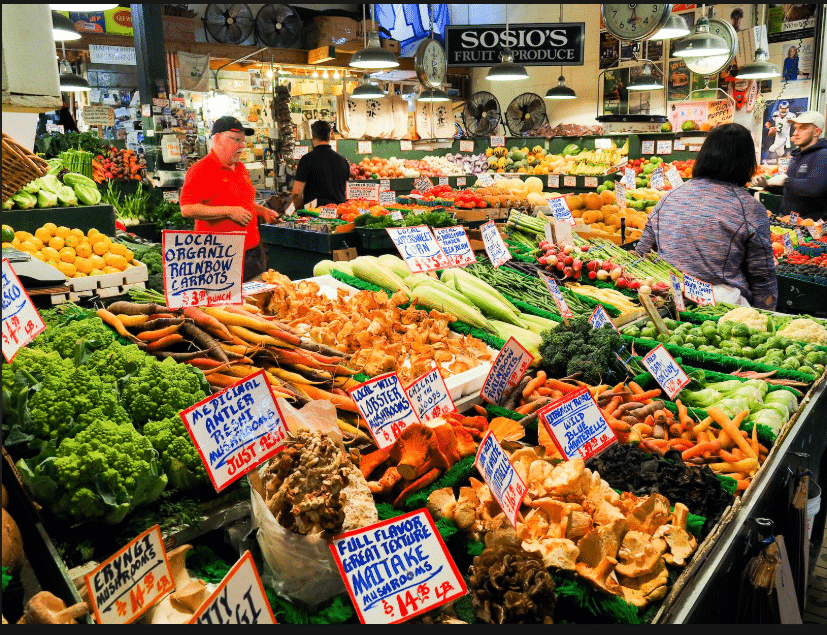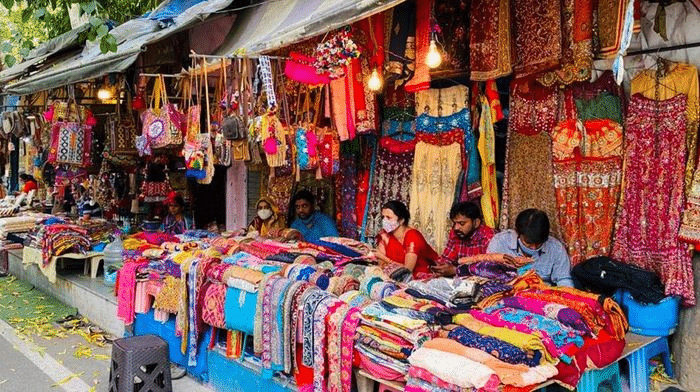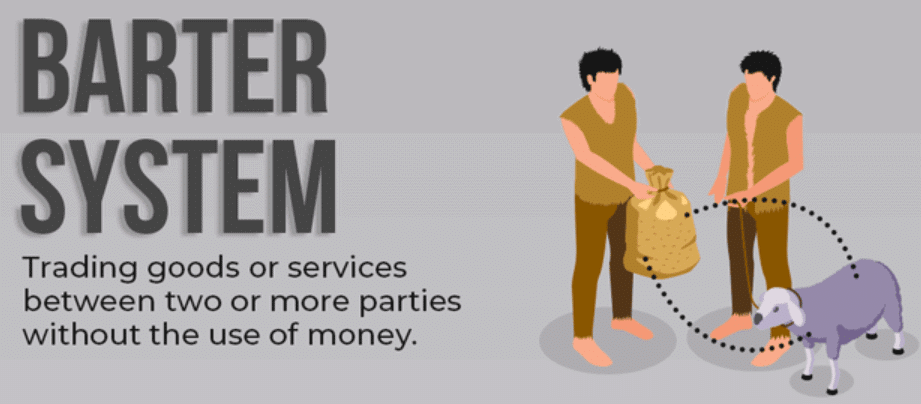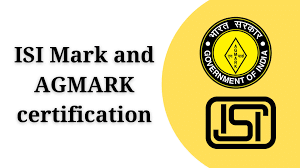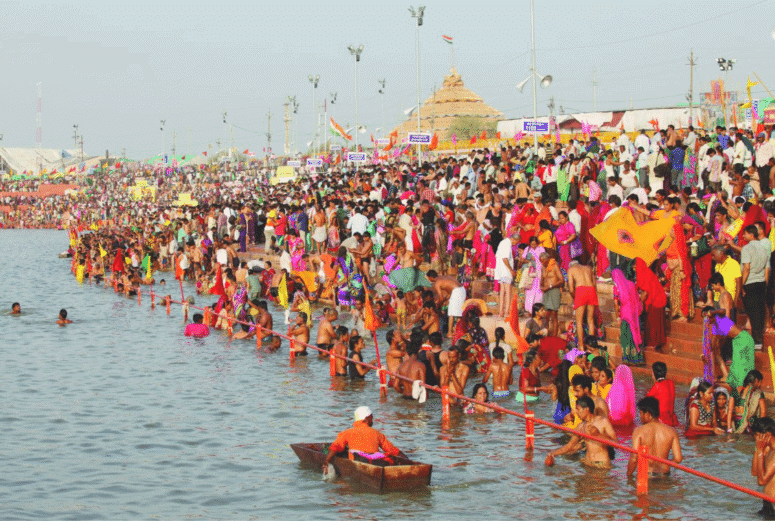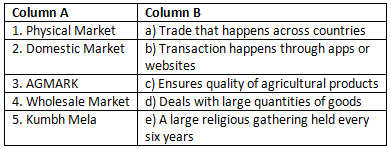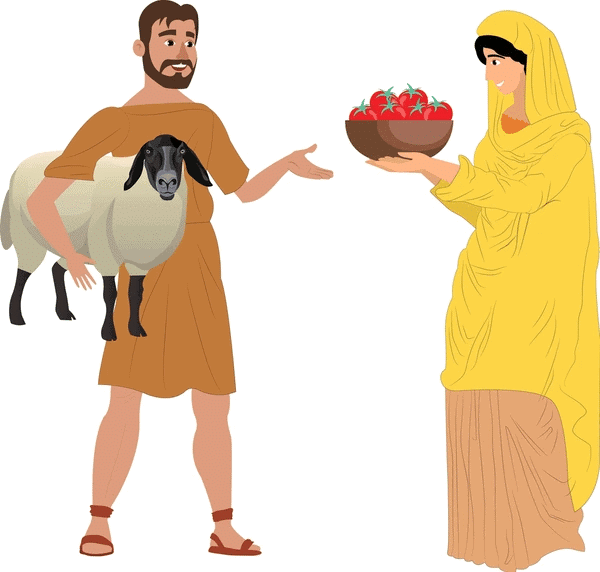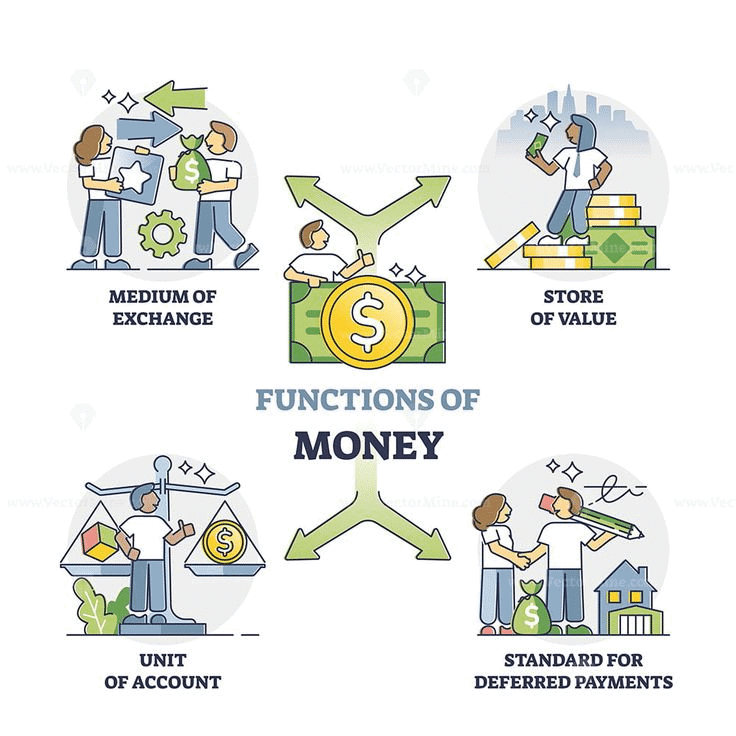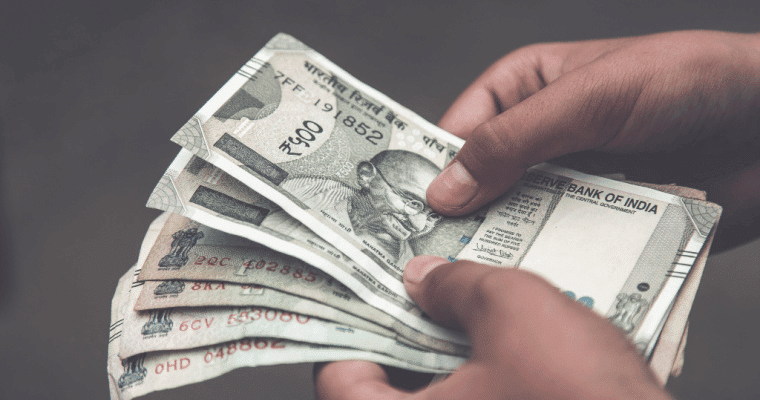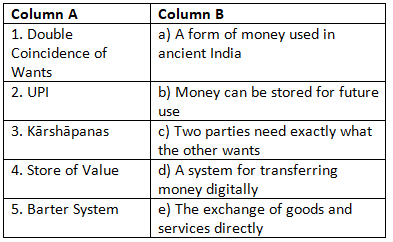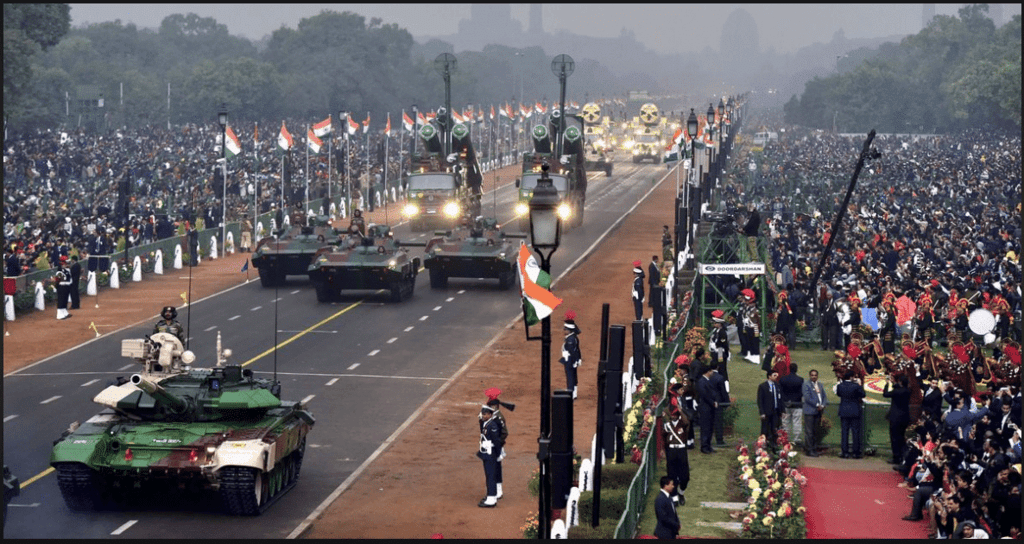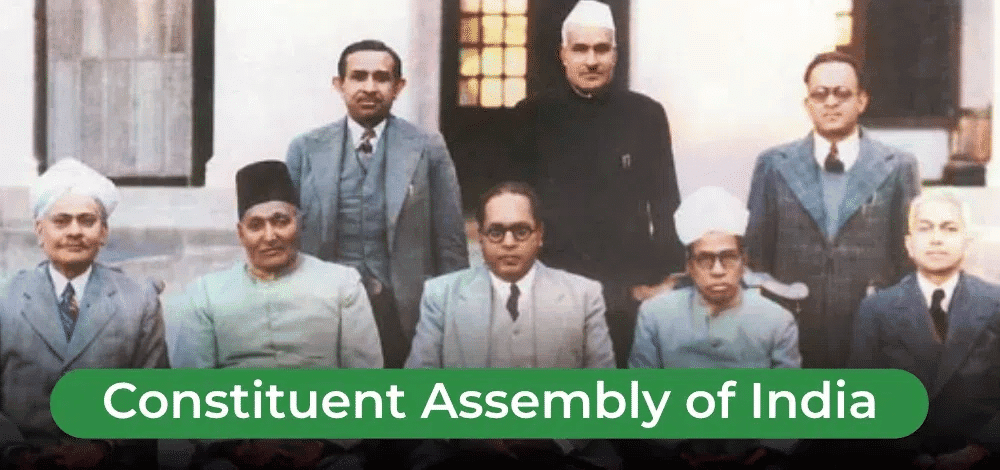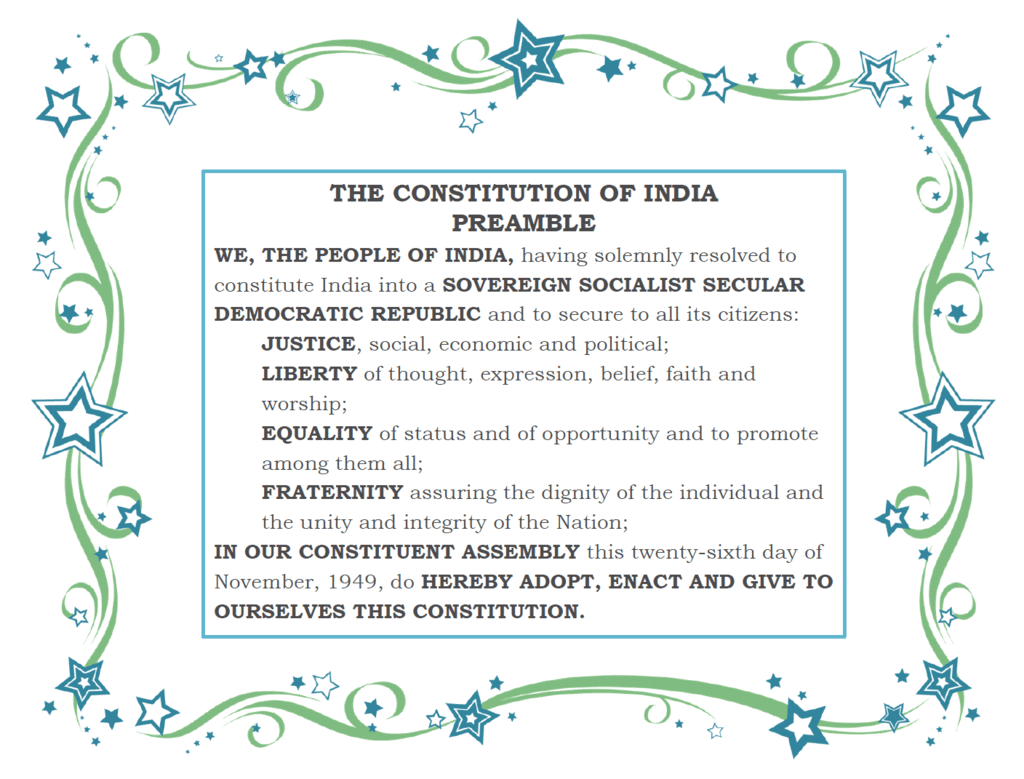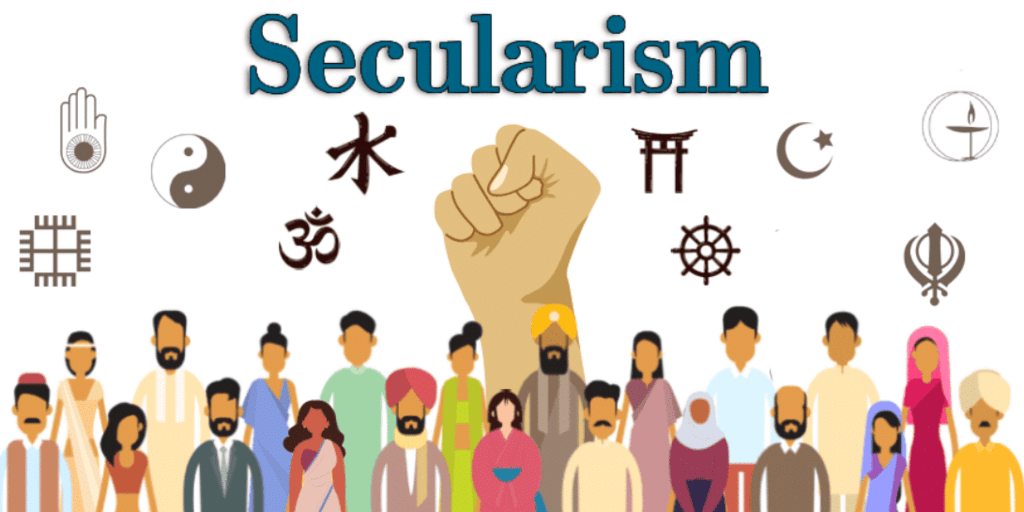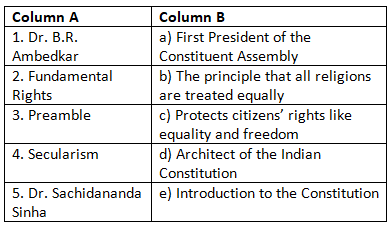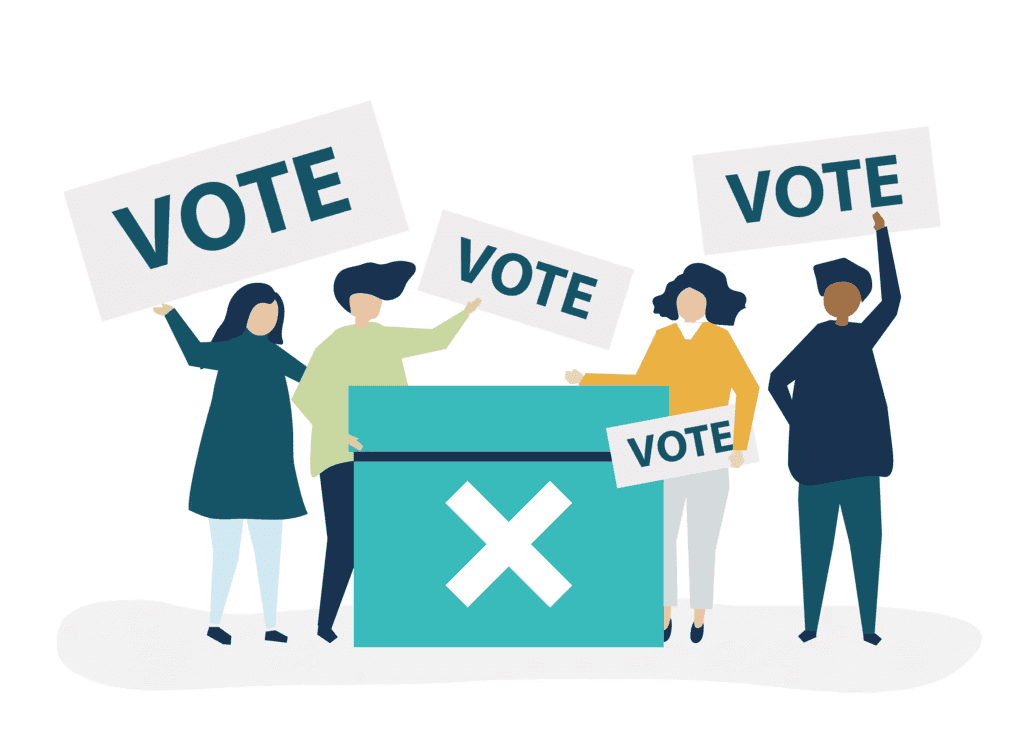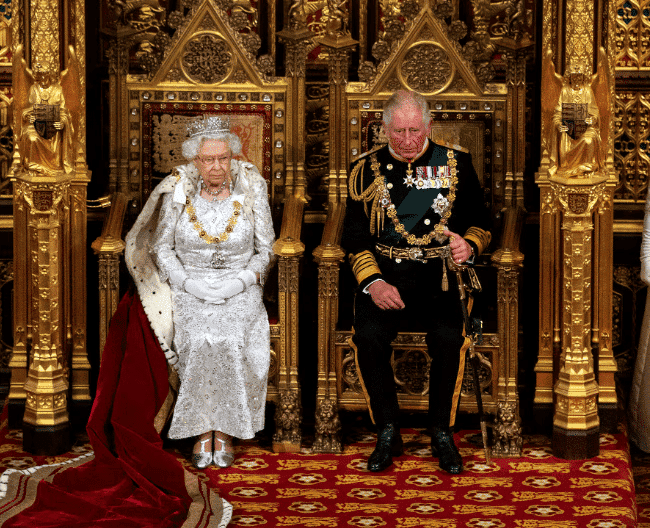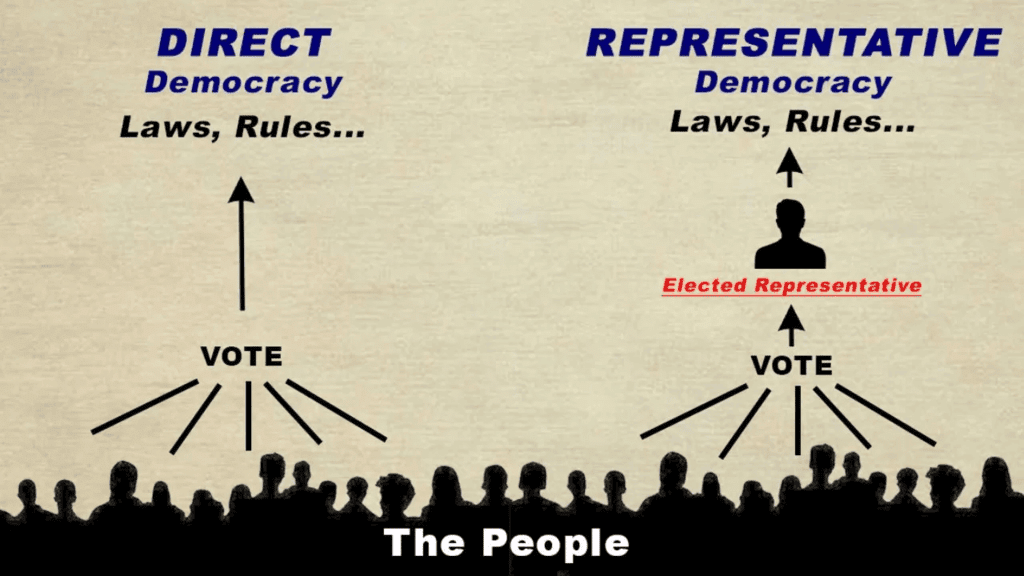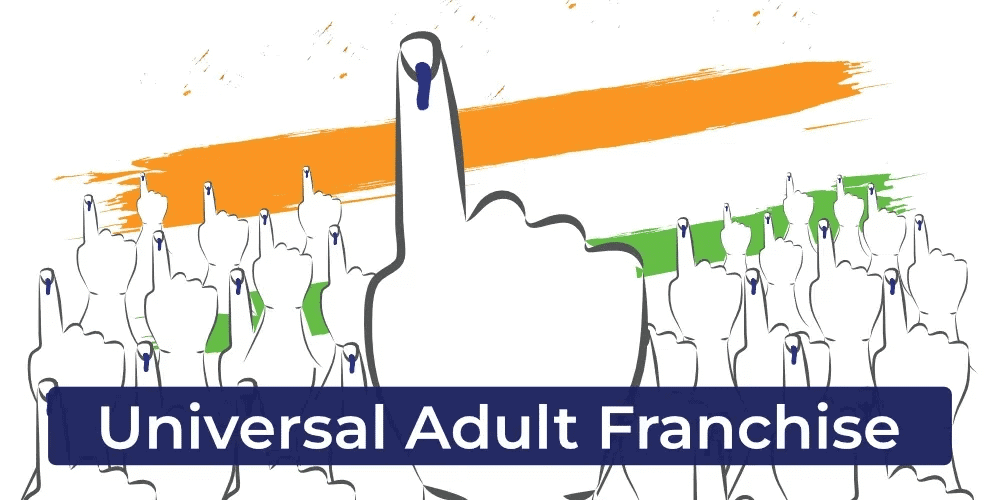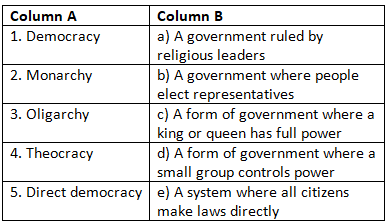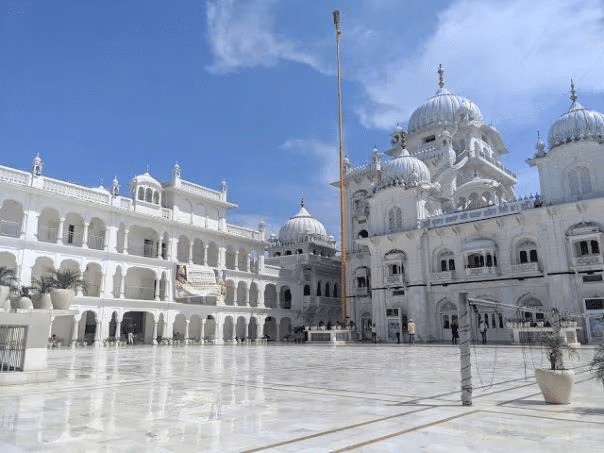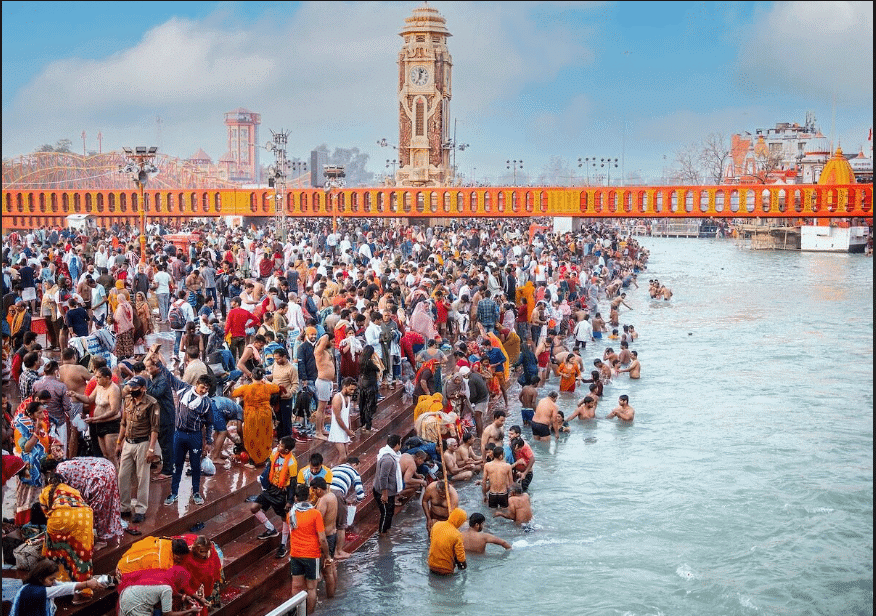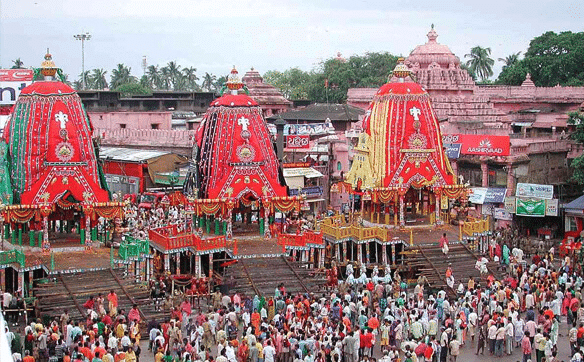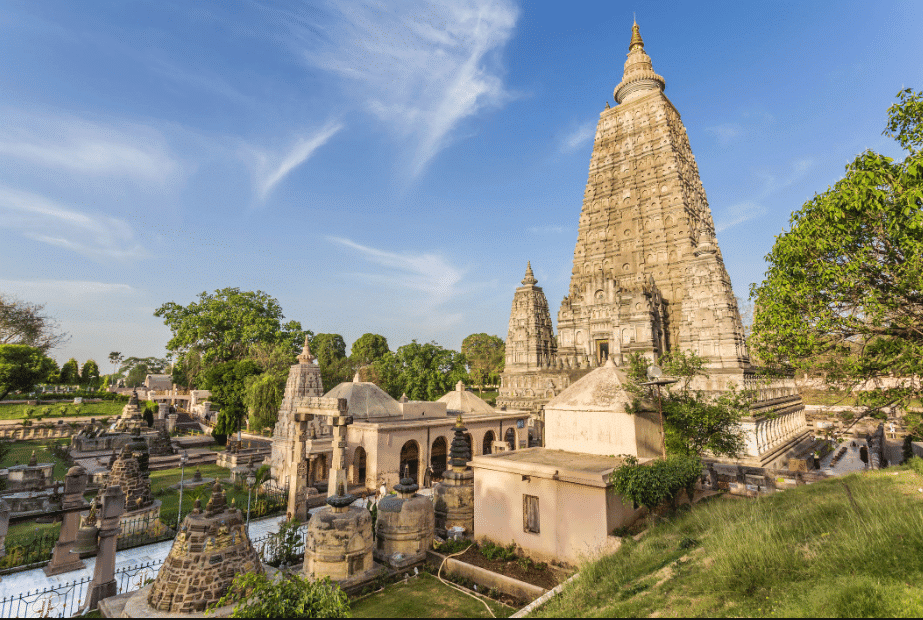Multiple Choice Questions (MCQs)
Q1: Who is the poet of “The Funny Man”?
a) Hugh Lofting
b) Natalie Joan
c) Helen Keller
d) Eliza Cook
Ans: b) Natalie Joan
The poem is written by Natalie Joan.
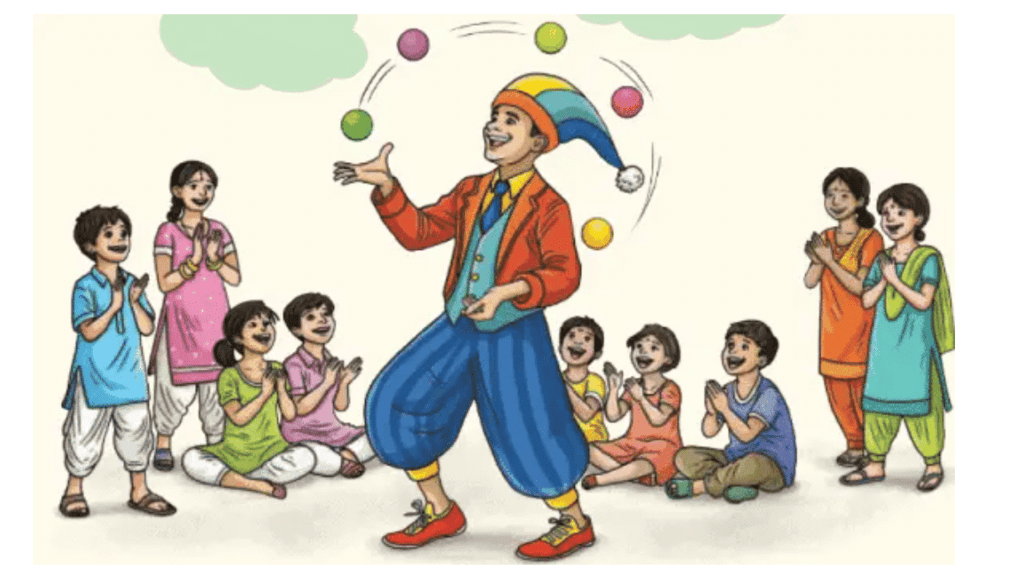
Q2: What does the funny man wear on his head?
a) A hat
b) A shoe
c) A bun
d) Two hats
Ans: b) A shoe
The poem describes the funny man wearing a shoe on his head, which is an unusual and humorous choice. Hats are worn on his feet, and a bun is offered later, not worn.
Q3: What does the funny man offer the poet instead of a rose?
a) A currant bun
b) A flower
c) A song
d) A hat
Ans: a) A currant bun
The funny man says he is presenting a rose but offers a currant bun, creating a humorous twist.
Q4: How does the funny man leave at the end of the poem?
a) He walks away
b) He sings a song
c) He hops on his head
d) He gives a bun
Ans: c) He hops on his head
In the final stanza, the funny man turns around and hops home on his head, an absurd and funny way to leave.
Q5: What does the word “staggered” mean in the poem?
a) Sang loudly
b) Moved unsteadily
c) Jumped quickly
d) Smiled politely
Ans: b) Moved unsteadily
The word “staggered” is defined in the poem as moving unsteadily, as if about to fall, which describes the poet’s reaction to the bun.
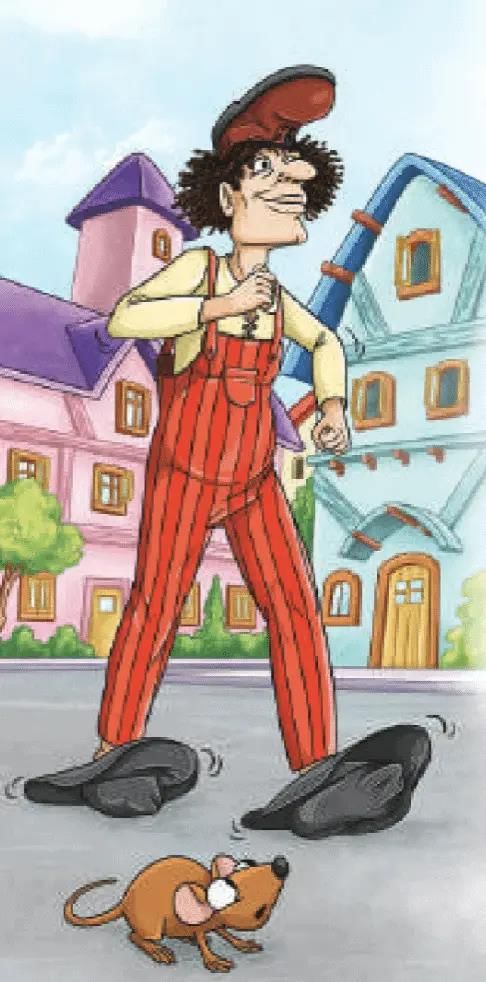
Fill in the Blank
Q1: The funny man wears _______ on his feet.
Ans: hats
Q2: The poet describes the man’s action as a funny sounding _______.
Ans: sight
Q3: The man addresses the poet as “Your _______.”
Ans: Highness
Q4: The poet says the bun has a funny looking _______.
Ans: smell
Q5: The word “manners” refers to polite _______.
Ans: behaviour
True or False
Q1: The funny man wears shoes on his feet like most people.
Ans: False
The funny man wears hats on his feet, not shoes, which are on his head.
Q2: The poet is shocked when the man offers a bun as a rose.
Ans: True
The poet staggers back against the wall, showing shock at the bun offered as a rose.
Q3: The funny man answers the poet’s question about his hats.
Ans: False
The man does not answer the question about his hats; he hops away instead.
Q4: The poem teaches us to enjoy playful and imaginative moments.
Ans: True
The moral encourages enjoying playful and imaginative moments, as shown by the man’s actions.
Q5: The word “currant” means a type of shoe.
Ans: False
“Currant” refers to a small, dried fruit, not a shoe, as defined in the poem.
Very Short Answer Questions
Q1: What does the funny man raise to greet the poet?
Ans: The shoe on his head
Q2: Where does the funny man sit while singing his song?
Ans: On the ground
Q3: What does the poet ask the funny man about his appearance?
Ans: Why does he wear two hats on his feet
Q4: What is the meaning of the word “hopped” in the poem?
Ans: Jumped on one foot
Q5: What is one moral of the poem?
Ans: It’s okay to be different
Long Answer Questions
Q1: How does the funny man’s appearance and behaviour create humour in the poem?
Ans: The funny man’s appearance and behaviour create humour through their absurdity and unexpectedness. He wears a shoe on his head and hats on his feet, reversing normal clothing in a way that defies logic and amuses readers. His polite manners, like raising his shoe to greet the poet and addressing her as “Your Highness,” contrast comically with his odd actions, such as offering a currant bun as a rose. Singing a strange song while sitting on the ground and hopping home on his head further adds to the silliness, making his carefree and unconventional nature a source of laughter throughout the poem.
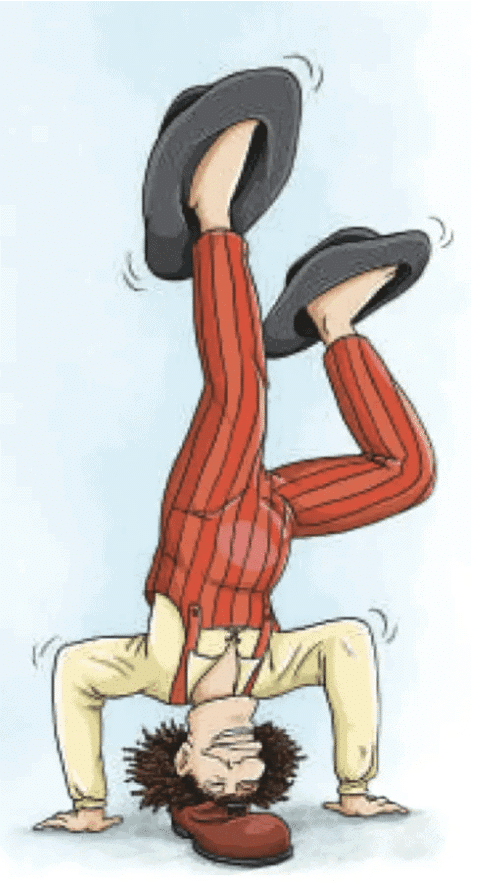
Q2: Describe the interaction between the poet and the funny man when he offers a bun.
Ans: When the funny man offers a bun, he politely says he wants to “present” the poet with a rose, addressing her as “Your Highness,” and holds a currant bun to her nose, as if it’s a flower to smell. Shocked by this unexpected act, the poet staggers back against the wall, showing her surprise. She responds wittily, saying she’s never seen a “rose” with such a “funny looking smell,” playing along with the man’s joke. This interaction is humorous and light-hearted, highlighting the poet’s amusement and ability to engage with the man’s quirky sense of humour.
Q3: Explain how the funny man’s actions in the final stanza add to the poem’s playful tone.
Ans: In the final stanza, the funny man’s actions—turning around and hopping home on his head in response to the poet’s question about his hats—add to the poem’s playful tone by escalating the absurdity. Instead of giving a straightforward answer, his bizarre method of leaving is unexpected and impractical, amplifying the silliness. This playful exit reinforces his carefree and imaginative nature, leaving readers with a vivid, humorous image that encapsulates the poem’s light-hearted spirit and encourages laughter at his unconventional behaviour.
Q4: What is the moral of the poem, and how does the funny man’s character reflect it?
Ans: The moral of the poem is that it’s okay to be different and that playfulness can bring joy to others. The funny man’s character reflects this through his eccentric actions, such as wearing a shoe on his head, offering a bun as a rose, and hopping home on his head. These choices show he embraces his unique style without concern for norms, spreading amusement to the poet and readers. His polite yet silly interactions, like singing a strange song or addressing the poet grandly, demonstrate how his imaginative behaviour creates happiness, embodying the poem’s message of celebrating individuality.
Q5: Discuss how the poet uses playful language to make the poem fun and engaging.
Ans: The poet uses playful language to make the poem fun and engaging by blending simple, vivid words with humorous and sensory phrases. Phrases like “funny sounding sight” and “funny looking smell” mix senses in a whimsical way, creating a sense of surprise and delight. The exaggerated address “Your Highness” and descriptions of absurd actions, like “hopped home on his head,” add a lively, silly tone. The use of words like “staggered” and “currant bun” paints a clear, amusing picture, while the rhythmic structure and rhymes, such as “street” and “feet,” keep the poem bouncy and engaging, inviting readers to enjoy the light-hearted fun.
